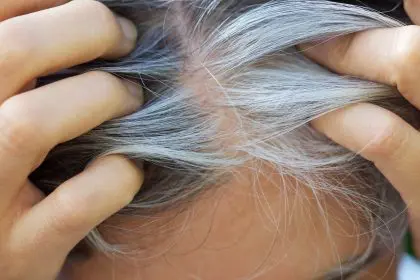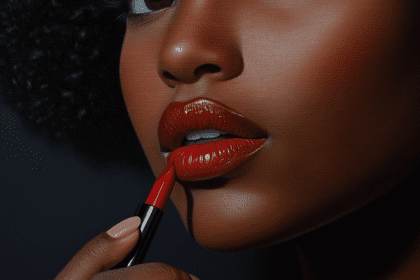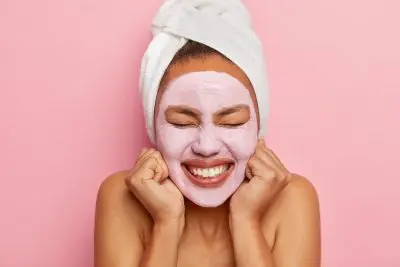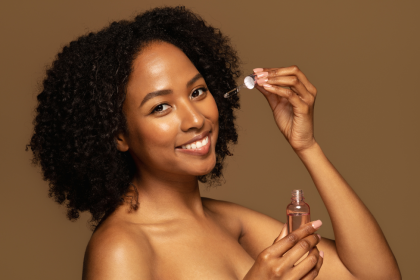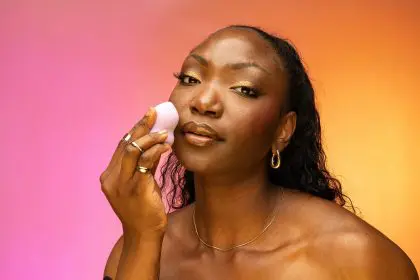That steamy, hot shower you look forward to every morning feels amazing. It wakes you up, soothes your muscles, and starts your day on a relaxing note. But here’s the uncomfortable truth – that scalding water might be the very reason your skin looks dull, feels tight, and never seems to improve despite your expensive skincare routine.
While most of us scrutinize every ingredient in our serums and moisturizers, we completely overlook the most basic skincare step of all – how we shower. That seemingly innocent daily habit could be undoing all your careful skin efforts in just minutes each day.
The shocking truth about hot water and your skin barrier
Your skin has a critical protective layer called the moisture barrier – think of it as your body’s natural shield against the outside world. This delicate barrier is made up of lipids (oils) that hold your skin cells together, keeping moisture in and irritants out.
Hot water is essentially kryptonite for this protective barrier. When water temperature creeps above lukewarm, it starts dissolving those essential lipids, creating microscopic cracks in your skin’s defenses. It’s like power-washing the protective coating off your skin – satisfying in the moment, but devastating in the aftermath.
The hotter and longer your shower, the more damage occurs. This explains why your skin often feels tight and slightly itchy after a particularly hot shower – you’re experiencing the immediate effects of a compromised moisture barrier.
What makes this particularly troubling is how the damage compounds over time. Your skin might bounce back from occasional hot showers when you’re younger, but with daily exposure, your moisture barrier becomes chronically weakened. The result? Skin that looks increasingly dull, feels rough, and loses that healthy glow regardless of what expensive products you apply afterward.
Why your face looks dull despite your skincare routine
Ever notice how your carefully curated skincare routine sometimes seems to stop working? You’re applying all the right products, but your complexion still looks lackluster and tired. Hot showers might be the hidden culprit.
Even if you’re not directly spraying hot water on your face, the steam and ambient heat in your bathroom can trigger increased blood flow and inflammation. This repeated cycle of heat-induced inflammation can lead to a chronically stressed complexion that presents as dullness.
More concerning is how hot water strips away your skin’s natural oils – not just the excess oils that might contribute to breakouts, but the beneficial ones your skin needs to maintain its radiance. Without these oils, your skin struggles to reflect light properly, leaving you with that flat, matte appearance that no highlighter seems to fix.
This oil-stripping effect impacts more than just appearance. When your skin is constantly depleted of its natural moisture, cell turnover slows down. Dead skin cells accumulate on the surface instead of shedding normally, creating a physical barrier that blocks your expensive serums and creams from penetrating properly.
The unexpected link between hot showers and skin aging
That steamy shower might be fast-tracking the aging process right before your eyes. Hot water doesn’t just remove surface oils – it triggers a cascade of inflammatory responses in your skin that can accelerate the breakdown of collagen and elastin, the proteins responsible for keeping your skin firm and youthful.
Research has found that regular exposure to hot water activates certain enzymes in the skin that break down these structural proteins faster than normal. It’s like inadvertently turning on your skin’s self-destruct sequence during your morning routine.
The heat also dilates blood vessels near the skin’s surface. While temporary redness might fade, repeated dilation and constriction of these vessels over time can lead to permanent redness and visible capillaries, particularly around the nose and cheeks.
Perhaps most concerningly, damaged skin barrier function from hot showers makes your skin more vulnerable to UV damage even after you’ve left the bathroom. A compromised moisture barrier simply can’t protect your skin cells from environmental damage as effectively, amplifying the aging effects of everyday sun exposure.
How your shower temperature affects your body skin
The skin on your body suffers even more directly from hot showers than your face. With regular exposure to high temperatures, the skin on your limbs, torso, and back often develops a particular kind of dullness characterized by a slightly ashy, gray appearance that no amount of body lotion seems to fix.
This happens because body skin, especially on areas like shins, arms, and torso, has fewer oil glands than facial skin. It’s naturally drier and more vulnerable to the moisture-stripping effects of hot water. When repeatedly exposed to high temperatures, body skin develops microscopic cracks that scatter light instead of reflecting it, creating that lackluster appearance.
These tiny fissures in your skin barrier also lead to water loss throughout the day. You might notice your skin becoming increasingly dry as hours pass after your shower – that’s transepidermal water loss in action, a direct result of barrier damage from water that was too hot.
For those with conditions like eczema or keratosis pilaris (those tiny bumps often found on upper arms and thighs), hot showers can trigger flare-ups that make skin texture even more problematic. The combination of barrier damage and inflammation creates perfect conditions for these conditions to worsen.
The winter shower mistake almost everyone makes
During colder months, the temptation to crank up the shower temperature becomes nearly irresistible. Unfortunately, this is exactly when your skin is most vulnerable to hot water damage.
Winter air typically has lower humidity, which already challenges your skin’s moisture balance. Heating systems further dry indoor air, creating a double-threat to your skin barrier even before you step into the shower.
When you add hot water to this equation, you’re essentially hitting already compromised skin with its biggest weakness. The result is the notorious “winter skin” – dull, flaky, sometimes itchy, and resistant to even the richest moisturizers.
This explains why many people find their skin looking its worst during winter months despite using heavier creams and oils. The damage happens before the first drop of moisturizer ever touches your skin.
The temperature sweet spot for glowing skin
The ideal shower temperature for maintaining skin radiance falls between 98°F and 105°F – essentially lukewarm. At this temperature range, you can effectively cleanse your skin without stripping its protective barrier.
Water that feels barely warm to the touch might seem less satisfying initially, but this temperature actually allows for proper cleansing while preserving the lipids your skin needs to remain supple and radiant.
If you struggle with the concept of lukewarm showers, consider this approach: start with a slightly warmer temperature (though never hot) to cleanse your body, then gradually reduce the temperature before exiting. This final cool rinse helps tighten pores and boost circulation without the inflammatory damage of hot water.
The length of your shower matters almost as much as the temperature. Even lukewarm water can eventually strip oils if exposure is too long. Aiming for showers under 10 minutes helps minimize potential damage regardless of temperature.
The post-shower window that saves your skin
How you treat your skin immediately after showering can either compound or counteract water temperature damage. There’s a critical three-minute window after stepping out of the shower during which your skin is uniquely receptive to moisture.
While your skin is still slightly damp, it’s primed to absorb products more effectively. Applying moisturizer during this window helps trap existing water against your skin instead of letting it evaporate and take more moisture with it.
For body skin, oil-based products or creams containing ingredients like shea butter, ceramides, or squalane can help rebuild the barrier that water may have compromised. These ingredients mimic your skin’s natural lipids, helping repair microscopic damage from water exposure.
This post-shower ritual becomes even more crucial if you do indulge in warmer water. Think of it as damage control – while not completely offsetting the effects of hot water, proper post-shower care can significantly reduce the visible impact on your skin’s appearance.
Breaking the hot shower habit without suffering
Transitioning away from hot showers doesn’t have to be miserable. A gradual approach often works better than going cold turkey. Try reducing your water temperature by just a few degrees each day until you reach that skin-friendly lukewarm range.
If you truly can’t give up the feeling of hot water, consider a compromise: limit hot water exposure to the middle portion of your shower, starting and ending with cooler temperatures. This approach still delivers the sensory pleasure while reducing overall skin damage.
For those who shower primarily to relax rather than just cleanse, consider alternatives for achieving that sensation. Adding a few drops of essential oils like lavender or eucalyptus to a cooler shower can create a spa-like experience without the skin-damaging heat.
Remember that skin cell turnover takes approximately 28 days, so consistent changes to your shower temperature will show cumulative results after about a month. The immediate improvement in how your skin feels will arrive much sooner – often within days of lowering the temperature.
What seems like a small daily choice – the temperature of your shower – actually has profound effects on your skin’s health and appearance. By making this one simple adjustment, you might discover that the secret to that elusive glow wasn’t in an expensive bottle after all, but in your shower faucet all along.



